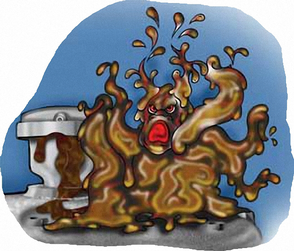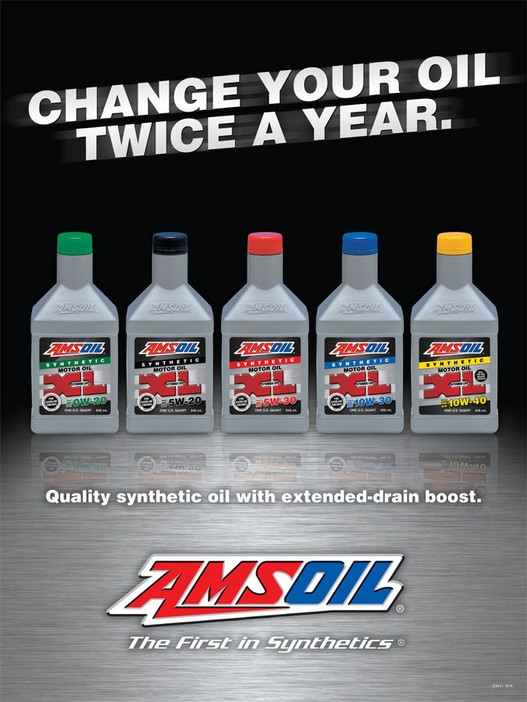Why Does Oil Need To Be Changed? - Select Synthetics - AMSOIL Authorized Dealer



Main menu:
- Home Page
-
Products
-
AMSOIL Products
- Shop by Product
- Shop by Equipment
- Shop by Category
-
Product Lookup Guides
- Product Lookup Guides - Home
- Filter Lookup Guides
- Auto & Light Truck Lookup Guide
- Motorcycle & Dirt Bike Lookup Guide
- Harley-Davidson Products Guide
- All-Terrain Vehicle Lookup Guide
- Utility Terrain Vehicle Lookup Guide
- Snowmobile Lookup Guide
- Marine Outboard Lookup Guide
- Personal Watercraft Lookup Guide
- Small Engine Lookup Guide
- Free Product Catalog
- AMSOIL - The Blog
- AMSOIL YouTube Videos
- AMSOIL Performance Tests
- The AMSOIL Newsstand
- AMSOIL Testimonials
- AMSOIL Guarantee
- Safety Data Sheets
- Oil Analysis Services
- Shipping & Product Return
- Safe & Secure Shopping
-
AMSOIL Products
- About AMSOIL
-
Oil Basics
- What Is Motor Oil?
- What Is Oil Viscosity?
- What Does Motor Oil Do?
- Why Does Oil Need To Be Changed?
- How Often Should I Change My Oil?
- When Should I Do My 1st Oil Change?
- Can I Mix Different Oils?
- Lubrication Regimes
- Newtonian vs. Non-Newtonian
- Base Oil Groups
- Motor Oil Specifications
- Service Classifications & Grades
- Oil Evaluation Tests
- Oil Filtration
- What is Oil Analysis?
- Why Synthetics?
- Buy Wholesale
- FAQs
- Contact Us
Oil Basics


Why Does Oil Need To Be Changed?
Many Factors Contribute to Oil's Demise
It is common knowledge that, at some point, engine oil must be changed. It's something that is preached relentlessly to vehicle owners by vehicle manufacturers, quick lubes and oil companies. But consumers are widely unaware of what exactly makes oil changes necessary.
Motor Oil is not like a fine wine that gets better over time. Instead, it ages at a rate that is influenced by engine age, driving conditions, fuel quality, motor oil quality and climate. If not changed in time, your oil will degrade and fail to protect your engine.
Many factors contribute to a motor oil's demise, but it is essentially the accumulation of contaminants in the oil and chemical changes in the oil itself that make a motor oil unfit for further service. With time, it is inevitable that the oil will be contaminated by dirt or sludge, or succumb to the extreme pressures or temperatures found inside an engine.
AMSOIL Synthetic Motor Oils are formulated with the industry's most advanced synthetic base stocks and additive packages to combat the forces that deteriorate conventional oils.
In order to understand why oil needs to be changed, we must first look at what causes motor oil to deteriorate, eventually becoming unfit for service and continued use. Several factors cause deterioration of the oil and prevent it from doing the job of lubricating and cooling engine parts:
1- The accumulation of contaminants in the oil such as:
- Abrasives
- Dust and Dirt
- Metal Particles
- Combustion By-products
- Water
- Acids
- Soot and Carbon
2- Chemical changes in the oil itself caused by:
- Dilution of the oil
- Depletion of additives
- Extreme Heat
Abrasives
Dust and Dirt
The design limitations of air cleaners, some oil fill caps and crankcase ventilation systems allow a certain level of dust and dirt into the engine, while leaks in the intake system can permit unfiltered air to enter the engine.
Particles of dust and dirt are circulated through the engine by the oil increasing wear rates.
It is well-known that contaminants in engine oils contribute to excessive oil consumption. Particle contamination is one of the leading causes of poor equipment reliability. Excessive particle ingression can result in valve stiction and seal wear, both of which can lead to progressive or sudden fluid loss.
Proper maintenance of the engine and its accessories can minimize the amount of contaminants entering the lubrication system and extend engine life.
Metal Particles
Normal wear of engine parts produces very small metal particles that are picked up and circulated by the oil. These metal particles increase wear rates and generate larger, even more abrasive metal particles that are then circulated through the engine by the oil.
Wear particles cause abrasive wear, particularly between rings and cylinders, leading to excessive blow-by. Blow-by, of course, allows oil to pass from the sump into the combustion chamber where it burns and leaves the engine through the tail pipe.
Coming in from the other direction, blow-by increases soot loading in the oil, rendering the antiwear additives less effective. In turn, this increases ring-to-cylinder wear, resulting in yet more blow-by and creating a vicious cycle of lubricant degradation and engine wear.
While oil filters help keep these particles at a minimum, they can’t remove them entirely.
Combustion By-products
Water
It is important to remember that combustion produces water vapor in your engine – more water than the fuel consumed.
When engine temperatures are high, most of the water goes out the tailpipe, but if the engine is cool, much of it may condense in the crankcase where it leads to the formation sludge, rust and corrosion.
Sludge deposits collect on oil pump screens, limiting the flow of oil to vital engine parts and resulting in rapid and destructive wear.

Free and emulsified water is harmful to the oil and the engine especially for short-trip drivers. Water condensation may be even more acute if your engine has the flexible fuel vehicle (FFV) option and you are burning an alcohol-gasoline fuel blend.
Acids
As oil ages and oxidises, more and more acids are generated and start to build up, with the end result being an increase in the Total Acid Number (TAN). A high acid number represents the potential for corrosion, rust and oxidation. It can also be a signal to perform an oil change.
Just like with most chemical reactions, base oil oxidation is accelerated by heat and pressure. It is no different than other commonly encountered oxidation reactions, such as rusting.
Oxidation is a degradation process that occurs when atmospheric oxygen reacts with organic molecules. Just like the effects that rusting and other corrosive processes have on metal substrates, oil oxidation results in a catastrophic and permanent chemical change to the base oil molecules.
The net effect of prolonged oxidation is that the oil becomes acidic, causing corrosion, while an increase in viscosity occurs. Oxidation will generally happen at a slow rate under optimum conditions; however, as the health of the oil decreases, the rate of degradation will increase.
There are several other factors that, if not controlled, can lead to increased rates of oxidation, including heat, air, water and metallic particles.
Two common field tests that can help to indicate possible oxidation of the oil are darkening color and foul odor. Oxidation usually has a sour or pungent odor, similar to rotten eggs. It occurs when the hydrocarbon constituents of oil combine chemically with oxygen.
During combustion, a low-quality fuel with high sulfur content can produce sulfuric acid, which attacks the oil and causes a drop in the Total Base Number (TBN) which reflects the oil’s ability to neutralize acids.
Synthetic-based formulations have much higher Base Number (BN) retention than petroleum-based formulations. The longer a lubricant can resist turning to acid, the longer it can be used.
By using oil analysis, you will be able to track the TAN and the TBN of your oil and determine how much oil life is remaining.
Soot and Carbon
Incomplete combustion produces soot, carbon and other deposit-forming materials.
An engine running too “rich” (with too much fuel) increases contaminant levels. Light-load, low-speed gasoline engine operation, as well as high-load, low-speed diesel engine operation increase levels of these combustion by-products.
Dilution of the Oil
In certain cases, the oil level may have risen since the last time you checked.
This could be due to condensed water (from combustion), condensed fuel or a coolant leak - all are causes for concern. Although this can be only a minor problem when engine operation is at high-speed or high-temperatures, it can be a significant problem in vehicles consistently used for short-trips.
When an engine is started or running abnormally, some unburned fuel is deposited on cylinder walls, leaking past the rings and into the crankcase. Fuel-diluted motor oil (from blow-by or leakage) can substantially reduce oil viscosity and thin additive concentration.
Fuel dilution also decreases oil film strength and increases oil consumption. The odor of diesel fuel can often be detected right from the dipstick.
Coolant leak is another serious problem relating to high oil level. Brown bubbles or a dried crusty-brown residue above the oil level line on the dipstick could be an indication that coolant (water and antifreeze) has leaked into your engine. The oil on the dipstick might even look like chocolate milk.
Another prominent indication of coolant leak is white exhaust smoke that has a sweet odor.
Depletion of Additives
When Motor Oil is blended, many chemicals (additives) are added to the oil. Additives impart new characteristics to the oil, or improve existing characteristics, enabling it to function in a desired manner when used to lubricate an engine. Additives improve the overall performance of the fluid.
Additives are used to enhance the beneficial properties of the base oil, helping it stand up to extreme operating environments, and make up for its deficiencies. Even the best base oil would not be able to protect as well against the effects of heat, shearing forces, chemical and water dilution, corrosion and wear particles. In short, additives make good base oils even better.
The various chemicals that comprise the additive system help modern Lubricants meet the increasing demands of today's high-tech engines. For passenger car motor oils, base oil makes up 70 to 80 percent of the final product; the other 20 to 30 percent is comprised of additive chemistry.
The more these additives become depleted, the less protection they provide. It’s also important to note that additives are sacrificial. Once they are gone, they’re gone.
Extreme Heat
Today's engines are running hotter than ever. More horsepower, turbo chargers and aerodynamic styling have created extremely hot environments that receive less cooling from outside air. High heat leads to oil oxidation, deposits and thickening in conventional oils.
Because they are made from impure, irregular molecules, conventional motor oils are more susceptible to the effects of heat.
The small, light molecules in conventional oil tend to evaporate as the oil is heated, leaving large, heavy molecules behind and leading to oil consumption and an increase in the oil's viscosity. If those large, heavy molecules are chemically unstable, they may also break-down and form deposits on component surfaces, further inhibiting the release of heat into the oil stream.
Even in relatively mild temperatures, oxygen works to break down some of the chemicals in conventional lubricants. The extreme heat in engines actually promotes oxidation. When conventional oil contaminants break down, they coat components with varnish, deposits and sludge and leave the lubricant thick, hard to pump and with very poor heat transfer ability.
AMSOIL Synthetic Motor Oils are very resistant to thermal and oxidative breakdown and therefore keep components free of varnish, deposits and sludge. They reduce maintenance costs, improve fuel economy and extend drain intervals through the use of high-quality synthetic base stocks and superior additive packages. (Plus our packaging is very colourful J )


Home Page | Products | About AMSOIL | Oil Basics | Buy Wholesale | FAQs | Contact Us | General Site Map